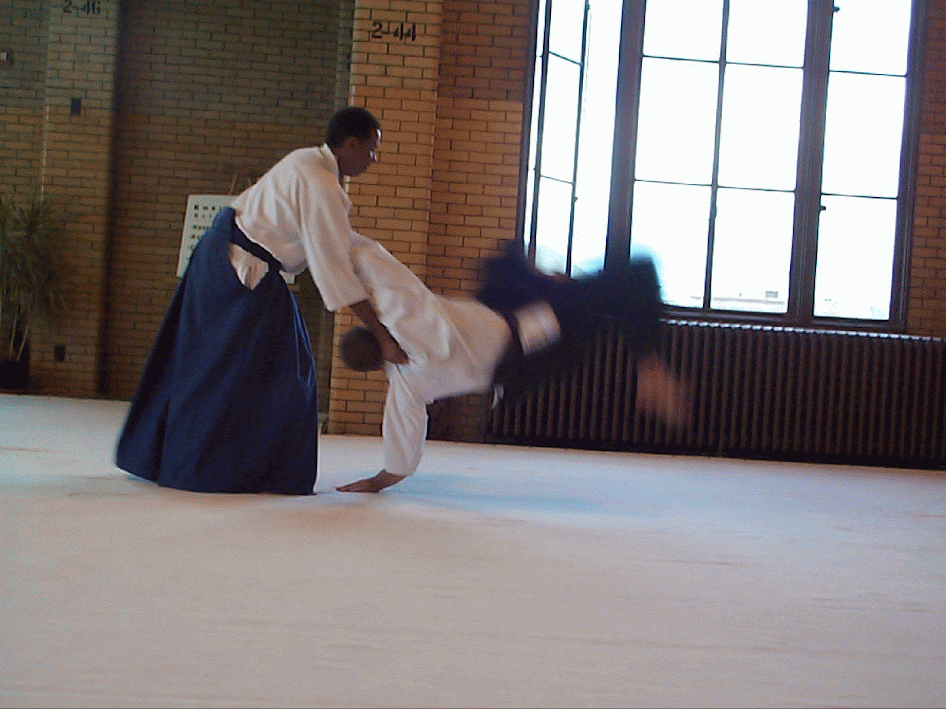
Tonight we will cover defense techniques for the 6th kyu test.
Attack terms commonly used in Aikido practice:
Mune tsuki - Punch to stomach
Shomen uchi - Strike downward to top of head
Yokomen uchi - Diagonal strike to temple or neck
Katate tori - Grab wrist with one hand
Kata tori - Grab shoulder or lapel with one hand
Ryote tori - Grab both wrists
Ryo kata tori - Grab both shoulders or lapels
Katate ryote tori - Grab one wrist with two hands
Ushiro - Attacks from behind
Ushiro kata tori - Grab both shoulders from behind
Ushiro hiji tori - Grab both elbows from behind
Ushiro tekubi tori - Grab both wrists from behind
Ushiro kubi shime -Wrist grab and choke rom behind
Keri - Kick






